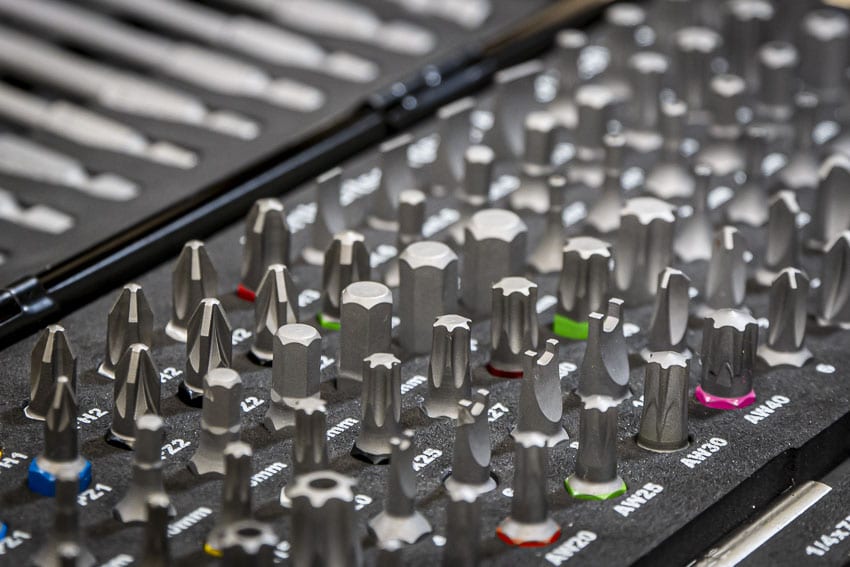Manufacturers make screwdrivers to fit a wide variety of screw bit types. They come in various lengths, grips, and styles—all so that they can do a great job fastening screws. But which types of screwdriver bits do you use for what application—and which work the best? We’ll attempt to go through each—even the specialty bits—and give you the Pros and Cons so you can understand each and choose the best bits for your application.
Remember when all screws were slotted? Thank goodness for innovation!
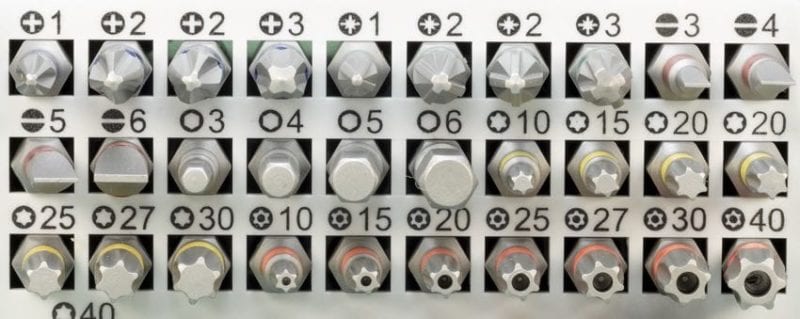
How to Get the Screw Bits You Need
As you know, both drivers and bits can be purchased individually and in sets. For the best deal, we recommend purchasing a good bit set to build a robust screwdriver fastener collection. One set we really like includes the Wurth Zebra Universal Bit Assortment but you can find less expensive screw bit solutions as well.
Having all the screw bit types ensures you’re ready for the wide varieties of fasteners you’re likely to encounter. Of course, not only do you have to contend with the wide variety of screw bit types and fasteners, but most also come in several sizes. Using the right screwdriver bit types for their proper applications ensures you don’t damage the fasteners. It also tends to speed up the job. Keep this in mind when shopping for the best screwdriver set so you can handle the myriad of screws and fasteners on the job site.
Editor’s Note: Check out our best screwdriver sets article for our top recommendations.
Screwdriver Bit Types Explained
The various drive tips are made for a variety of reasons. Some are patented because they offer a unique solution to keeping a driver bit in place—others are simply better for the application they are intended for. In our opinion, the biggest reason for going with a particular screw bit type is getting a good grip on the fastener.
Fit and Grip Matters Most
The tip of the screwdriver or driver bit should always fit snugly into the fastener so as not to slip around when the fastener is turned (at either low or high speeds depending upon the application). Impact drivers are particularly adept at maintaining the bit’s connection to the fastener when used properly.
Here is a quick look at some of the most common types of screws and fasteners you should have in your collection, and the drivers that fit them:
Phillips Head Screw Bits
The most common type of fastener has got to be the #2 Phillips head bit, but we’ve even seen adaptation here. The name “Phillips” comes from its inventor Henry F. Phillips in the 1930s. These types of screwdrivers have a pointed cross-head tip that matches a self-centering, cross-head screw. Believe it or not, Phillips heads were originally designed to cause the driver to cam out, to prevent over-tightening!
Pros
- Commonplace
- Inexpensive
Cons
- Cam out easily
Check out our article What is Cam Out to learn more.
Phillips vs Pozidriv Screw Bits
Similar to Phillips bits, Pozidriv offers another four points of contact that grasps screws even more securely to protect against camout. Pozidriv screws and bits seem popular overseas, but we now see them appearing all over in the US market…and we love it!
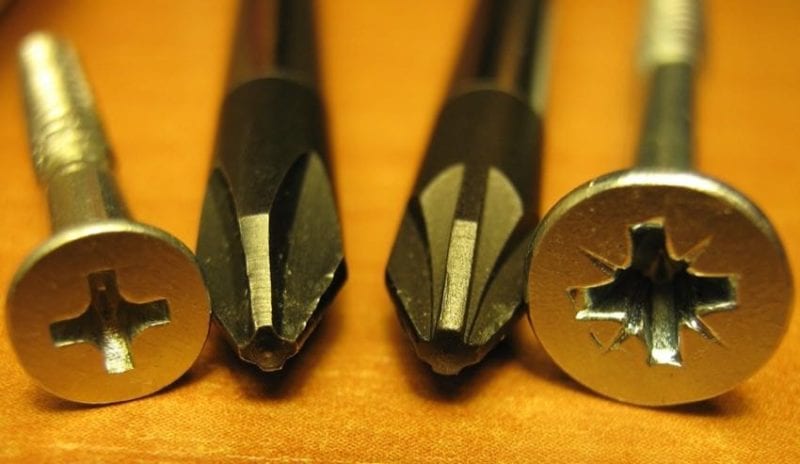
Slotted or Flat Head Screwdriver Bits
Slotted or flat heat screwdrivers, one of the oldest types of screwdriver, started in the early 1800s. This type of screwdriver bit works with slotted screws that have a cut through the top of the head.
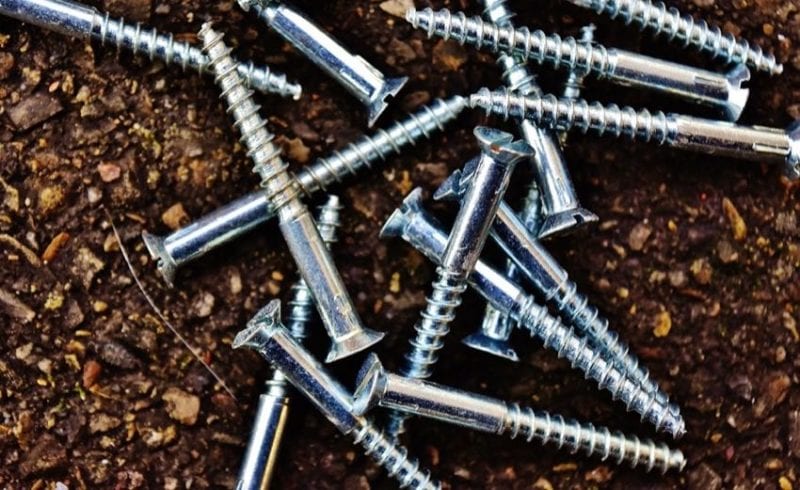
When choosing what size flat blade screwdriver to use, always make sure the tip is the width of the fastener and the bit fits snugly. If the flat head driver or bit wobbles in the screw—you can slide right off the head.
The advantage of this screw lies in its simplicity. Everything else presents a stark disadvantage. In general, most Pros try not to use these unless absolutely necessary. Can you guess where you find these most often? If you guessed “light switch plate covers” or “outlet covers”, you’d be correct!
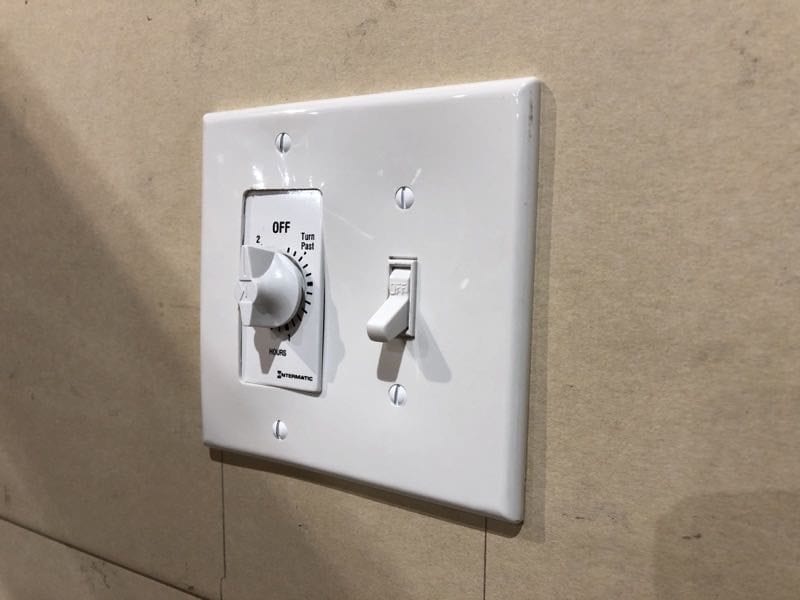
Pros
- Decorative
- Commonplace
- Inexpensive
Cons
- Everything else
Hex or Allen Head Screws and Bits
We refer to hex head screws as Allen screws. These are a useful type of fastener because of how effectively they limiting the amount of slip. An Allen or hex screw bit often makes its way into furniture but even automotive applications use them. We also find these types of screwdriver bits on bicycles.
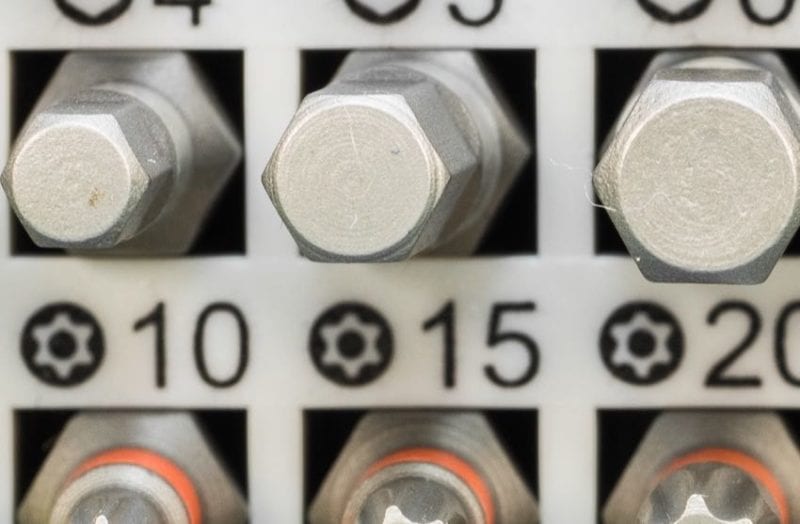
Pros
- Commonplace
- Inexpensive
- Handles medium to high torque well
Cons
- Can strip out under higher torque loads
- Metric and SAE sizes cause stripping due to mismatching
Torx Bits and Torx Plus Bits
TORX head screws and bits also commonly get referred to as Star bits. These-six-pointed bits resist slippage or cam-out better than slot head or Phillips head designs. In fact, TORX head bits and screwdrivers were specifically designed to prevent it.
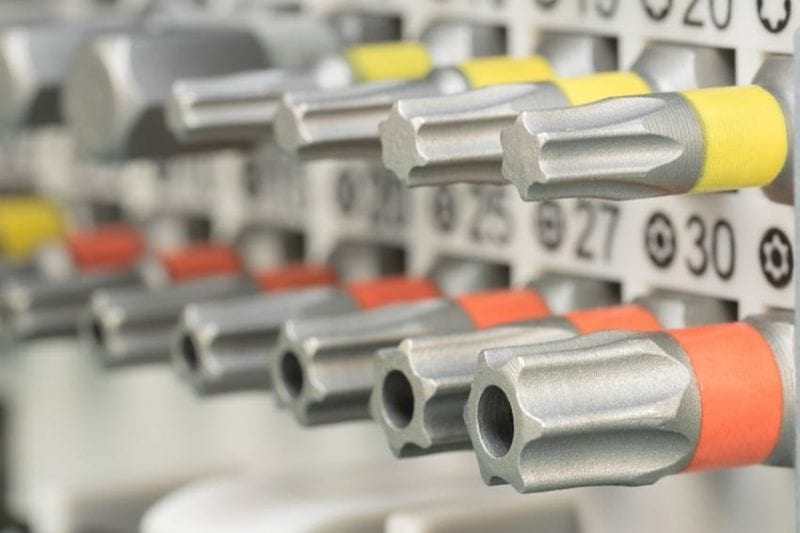
Pros
- Handles medium to high torque well
Cons
- Can strip out under high torque loads
- Typically more expensive
Torx vs Torx Plus
An adjustment to Torx, Torx plus took that star design and squared off the edges. That resulted in more surface-contact area. Of the many types of screwdriver bits on the market, Torq Plus might just be the most grippy and stable. To make things even more complicated, Torx Plus security bits have just 5 lobes instead of 4.
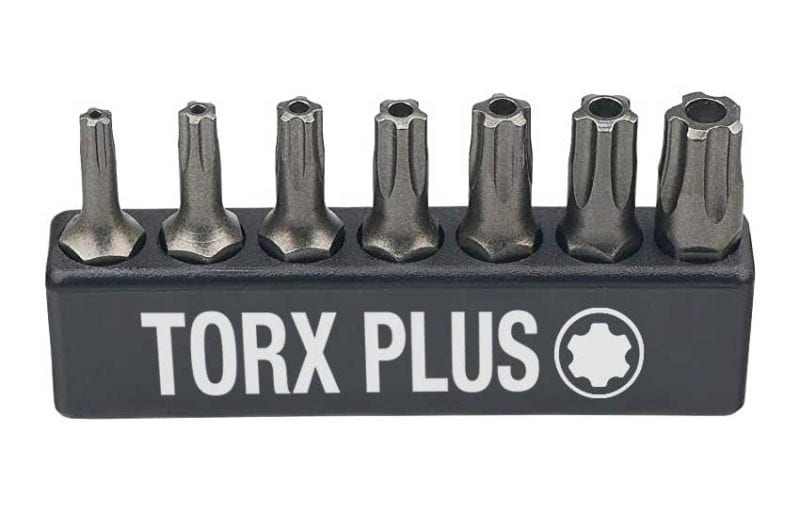
Pros
- Handles high torque well
Cons
- Typically more expensive
- Less commonly found
Square Drive Screw Bit Types
Square drive bits, sometimes referred to as Robertson bits, find their home in a variety of places. The leading place might just be electrical boxes and panels where they seem almost ubiquitous.
Some manufacturers of deck screws also use this style of drive—particularly with stainless steel wood screws. Stainless steel fasteners tend to be very soft if you don’t buy the right kind. Common trim head screws also use square drive bits and feature a very small head for countersinking into cabinets.
Pros
- Commonplace
- Inexpensive
- Handles medium torque well
- Works great for smaller head sizes (trim screws)
Cons
- Can strip out under higher torque loads (cheap stainless)
Triple Square Drive Bits
Triple square drive bits show up mostly in German automotive applications. We find them on BMW, Mercedes, VW, Audi, Porche, and other German automobiles. They work really well for high-torque applications like cylinder head bolts and components found in the drive train.
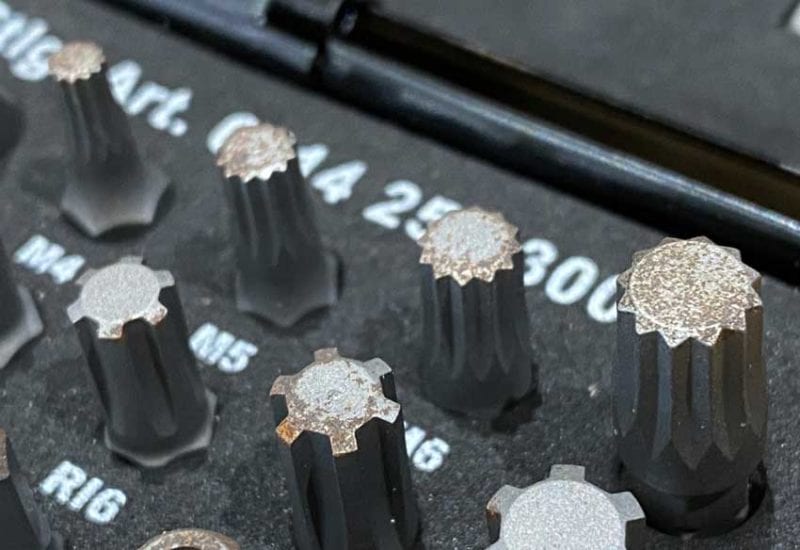
Triple square fasteners are typically made of hardened steel and are also tempered. This is so they can withstand the required torque without stripping out the star points.
Pros
- Excellent high torque capability
Cons
- Expensive
- Less common use in the US market aside from German vehicles
Triple Square vs Double Hex Bits
Double hex is a screw drive featuring two offset hex drives. It can be driven by standard hex key tools. While the shape resembles a triple square, it’s actually incompatible. It also strips far more easily.
While, potentially, they can handle more torque than a standard six-point bit, they require better build quality to avoid stripping. This is one of the rarest types of screwdriver bits. Almost no one encounters these bits or their associated bolts unless you remove head bolts from certain Toyota or Lexus cars.
Wrapping Up the Various Screw Bit Types
In addition to screw bit types, you also have various finishes and coatings to look at. Most quality fasteners feature either a galvanized, nickel-chrome, stainless steel, or coated finish. Each has various strengths, so pay attention to your needs.
While some types of screwdriver bits are less common, at the very least, be sure to keep a handy assortment of both straight, Philips, Torx, and square head screwdrivers and bits on hand.

